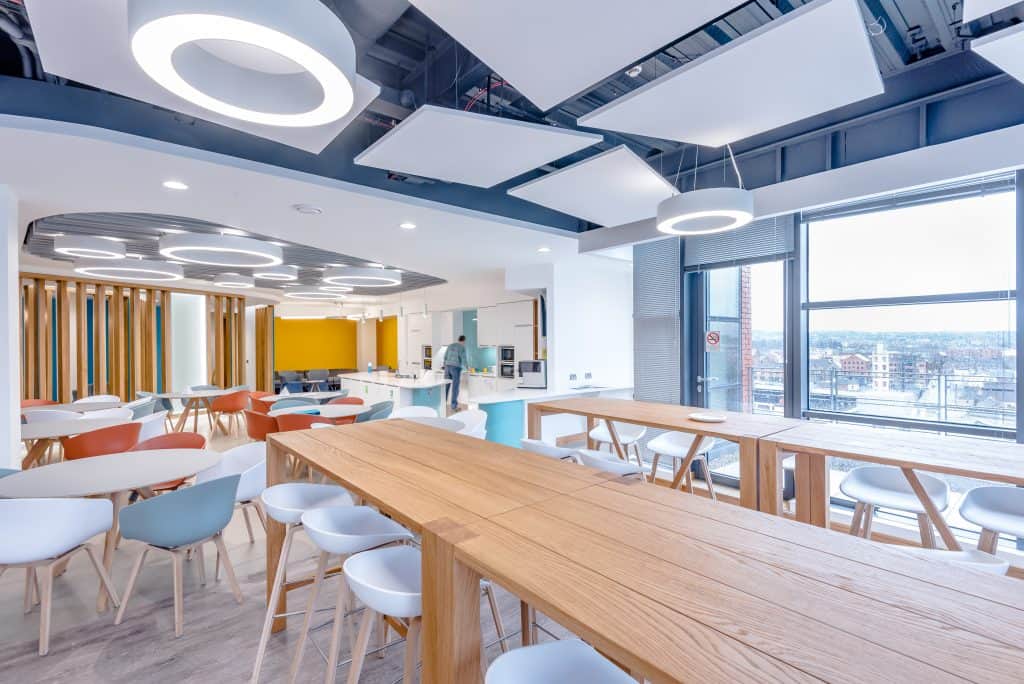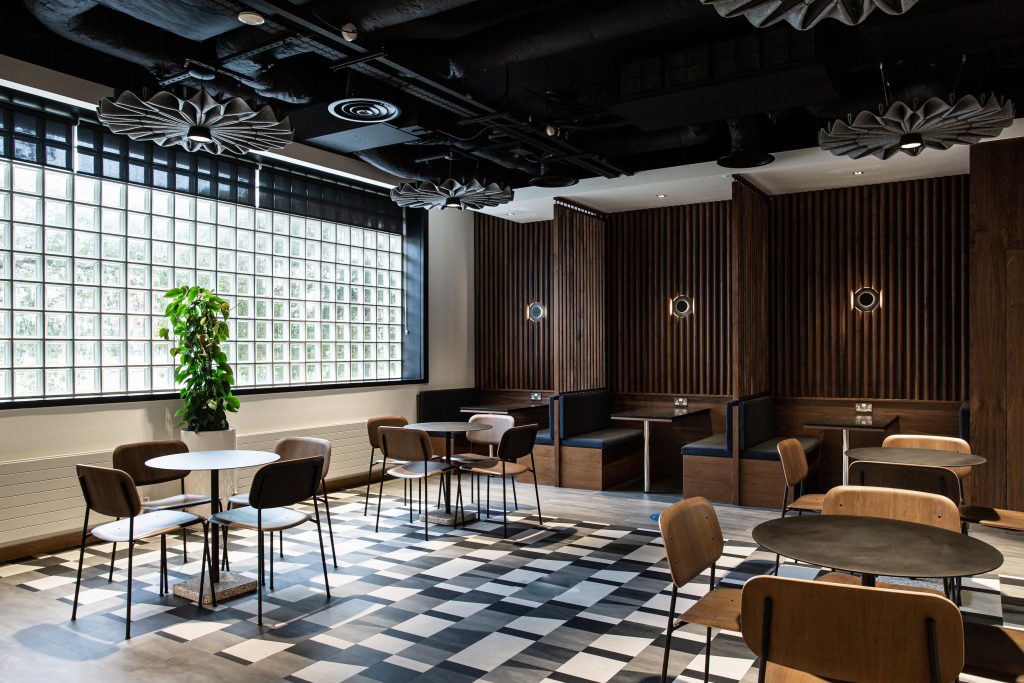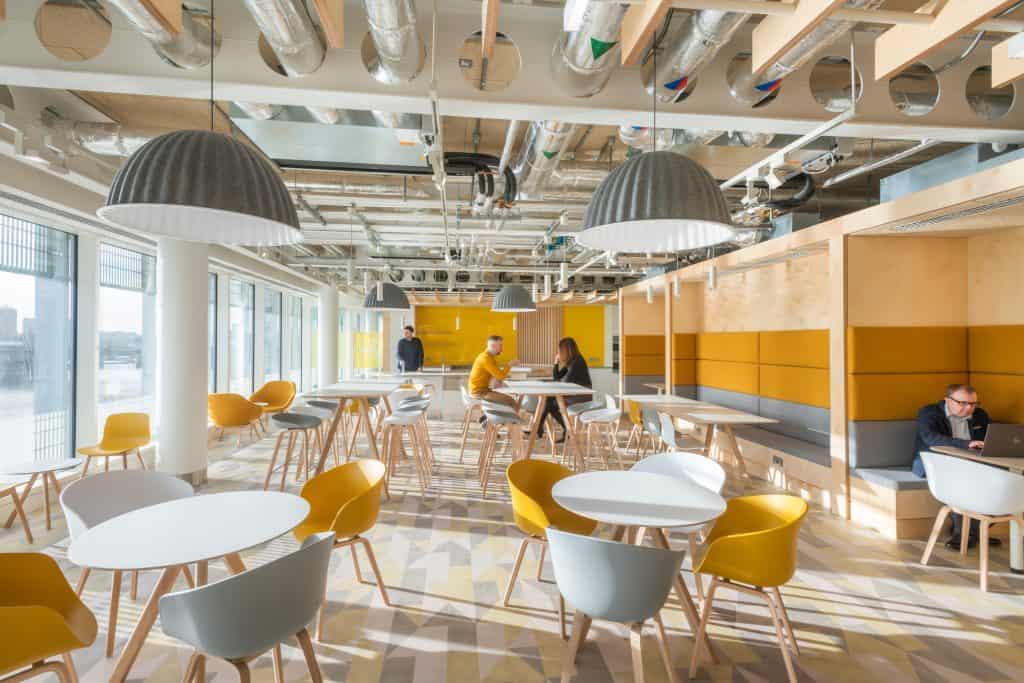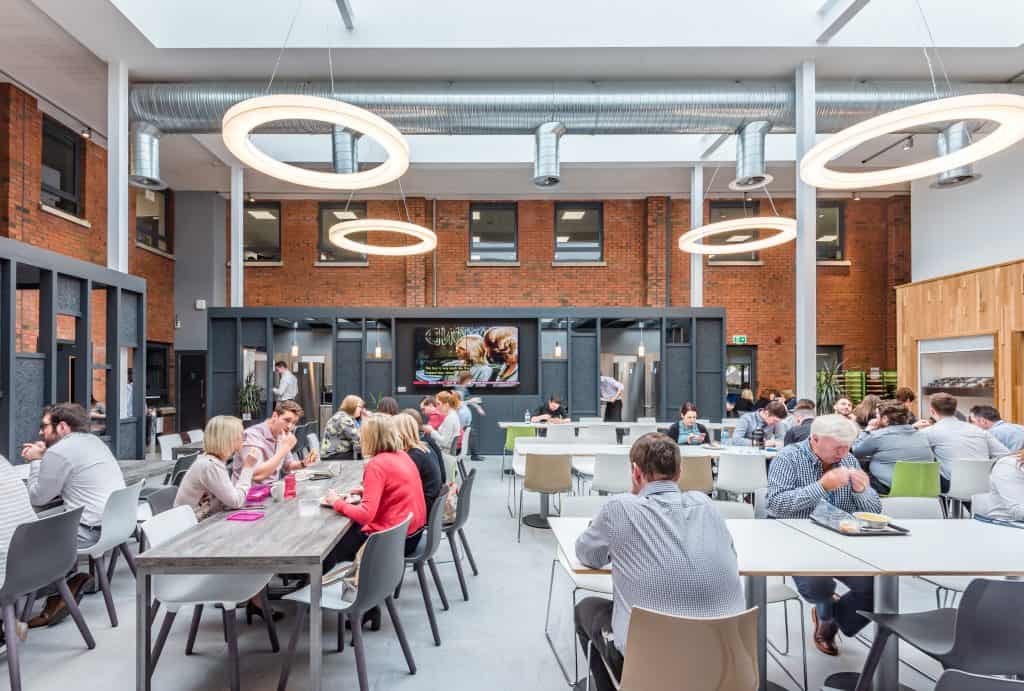‘Destination Offices’: The new norm?
The Workplace team at TODD Architects explain why ‘Destination offices’ are quickly becoming a top trend within workplace Design with increased emphasis on hybrid working in the wake of Covid 19.
With more people than ever working from home, we have seen a huge shift across our Practice in client demand when it comes to office layout and interior design. To coincide with a ‘hybrid’ model of working, clients are pursuing more sociable spaces that promote collaboration and learning. Less emphasis is being placed on creating static workstations for siloed activities that could be carried out at home.
With less focus on workstations, it makes sense for some organisations to revaluate their spatial requirements, with ratios of employees working from home Vs in the office increasing. This can help with overheads, but also provides a time to refresh and replenish the old static workplace. Others are choosing to retain their square footage in order to transform static areas into more agile working spaces and boost flexibility to become a ‘destination’ in themselves; providing an exciting, attractive environment to entice people from their homes into an active workplace.

The general look and feel of the workplace is also shifting. Organisations are looking to create a ‘home from home’ feel that is comfortable and relaxed, yet functional in allowing their employees to carry out their day-to-day tasks in a way that suits their needs and workstyles. It is important to provide an atmosphere that draws footfall into the space because it feels different from a domestic setting and offers additional functionality. In this sense, workplace design is moving closer towards finishes more traditionally associated with the hospitality sector; we can sleep and eat at home, but we go to a hotel for an experience away from the norm. Covid19 has proven that many of us can work from home, but it has also given us an appreciation for getting out of the house and pursuing novel experiences and interactions. By creating a workplace akin to the hospitality sector in look and feel, staff are more likely to perceive office-based activities in a positive light, in turn promoting creativity, collaboration and ultimately productivity.

Looking at the specific design requirements necessary to create a ‘destination’ office that is fit for purpose, technological advancements on the back of Covid 19 have had a considerable impact. With more meetings taking place through virtual technology, there is greater need to control general noise levels through acoustic buffers. Beyond designated booths with sound control, general office acoustic levels can be controlled through increased acoustic baffles, wraparound desk pads or soundmasking. The Integration of technology into furniture and spaces is also important for ensuring that everyone has access to IT facilities, whether using the traditional desk or collaborative furniture. Additional media units throughout task spaces are also key for promoting effective collaboration, including those ‘dialling in’ from home.

Looking at the specific design requirements necessary to create a ‘destination’ office that is fit for purpose, technological advancements on the back of Covid 19 have had a considerable impact. With more meetings taking place through virtual technology, there is greater need to control general noise levels through acoustic buffers. Beyond designated booths with sound control, general office acoustic levels can be controlled through increased acoustic baffles, wraparound desk pads or soundmasking. The Integration of technology into furniture and spaces is also important for ensuring that everyone has access to IT facilities, whether using the traditional desk or collaborative furniture. Additional media units throughout task spaces are also key for promoting effective collaboration, including those ‘dialling in’ from home.

In order for offices to become ‘destination’ spaces for teams to come together, greater flexibility in layout and furniture is required to create hubs to cater for activities that are difficult to complete at home. This will vary from sector to sector; for example, some industries are paper heavy and employees will prefer to manage paperwork in the office (legal industry), others require regular collaboration and break out areas for thinking (creative industry). On the flip side, some industries require minimal ‘in-person’ workplace interaction, but may wish to have a space in place to promote company values and create a hub that reflects their corporate culture and staff focus (IT industry). Creative industry clients may wish to opt for bleacher seating to facilitate knowledge sharing sessions, whereas IT clients may wish to include complimentary catering and relaxation facilities to promote staff wellness and retention.
It appears that both employers and employees have realised the benefits of moving away from the normal white static office to more flexible, warmer environment that harbours and promotes staff wellbeing and talents.
Originally featured in OnOffice Magazine click here to access
 close
close